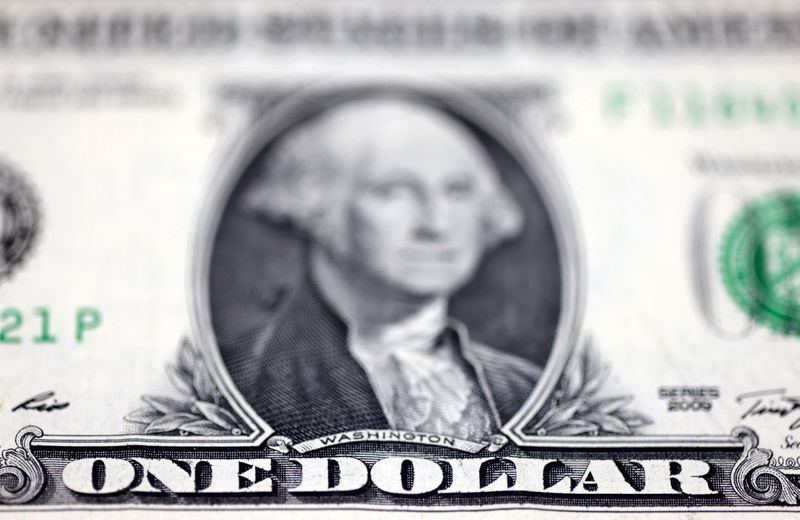(Reuters) -The U.S. dollar dropped sharply versus safe-haven currencies and the euro on Wednesday as investors worried about the economic impact of U.S. tariffs, which spooked world equity markets.
Major stock indexes sank, while a savage selloff in Treasuries sparked fears foreign funds were fleeing U.S. assets.
U.S. President Donald Trump’s “reciprocal” tariffs on dozens of countries took effect on Wednesday, including massive 104% duties on Chinese goods, deepening his global trade war.
China released a white paper on its trade and economic ties with the United States, reiterating that it would take countermeasures following higher tariffs on Chinese goods.
“One of the reasons why the dollar is suffering the most from additional tariffs on China is that markets feel the lack of immediate substitutes for some Chinese products means even greater inflationary and recessionary risks for the U.S.,” said Francesco Pesole, forex strategist at ING, arguing that the “’sell America’ scenario is becoming tangible again.”
The greenback dropped 0.8% against the safe haven yen at 145.09 and 0.4% versus the Swiss Franc after hitting a fresh 6-month low at 0.8379.
The U.S. dollar 30-year OIS Treasury swap spreads were last at -95 bps.
The Overnight Index Swap (OIS) rate is generally considered a close approximation of a risk-free rate.
Based on the sharp tightening of swap spreads, some market participants believed that investors including hedge funds have been selling liquid assets such as U.S. government bonds to meet margin calls due to portfolio losses across asset classes.
Some hedge funds have offloaded stocks as the market plunge forces them to curtail trading using borrowed cash.
The euro also jumped, helped by reports Germany’s conservatives had reached a deal with the centre-left Social Democrats to form a government, easing political concerns in the EU’s largest economy.
The single currency firmed 0.8% to $1.1044, creeping back to last week’s peak at $1.1147.
However, Citi analysts cut their 2025 euro zone growth forecast from 1.0% to 0.8% and their 2026 forecast from 1.3% to 0.6%. They also lowered their inflation expectations for the next three years, with the 2026 harmonised consumer price index (HICP) now projected to average 1.6%.
European Union countries are expected to approve on Wednesday the bloc’s first countermeasures against U.S. tariffs.
Markets were pricing in 104 bps of rate cuts from the Federal Reserve this year, from around 100 bps the day before.
They now forecast 77 basis points of European Central Bank monetary easing, up from around 70 basis points on Tuesday, while fully pricing in a 25 basis point cut next week compared to a 90% chance previously.
The dollar was down 0.6% versus the yuan offshore at 7.38, after reaching an all-time high at 7.4288, and all eyes are on China’s central bank to see whether it allows a further easing at its daily fix.
“Weakness in the renminbi continues to reflect building speculation over the potential for bigger devaluation in response to the intensifying trade war between the U.S. and China,” said Lee Hardman, senior currency analyst at MUFG.
The People’s Bank of China (PBOC) will not allow sharp yuan declines and has asked major state-owned banks to reduce U.S. dollar purchases, people with direct knowledge of the matter told Reuters on Wednesday.
Some analysts argued that, beyond the yen’s relative safe-haven status, Japan’s macro backdrop remains relatively strong and rate differentials are expected to continue to favour Japan.
Bank of Japan Governor Kazuo Ueda suggested the chance of a pause in interest rate hikes as U.S. tariffs jolt markets.




